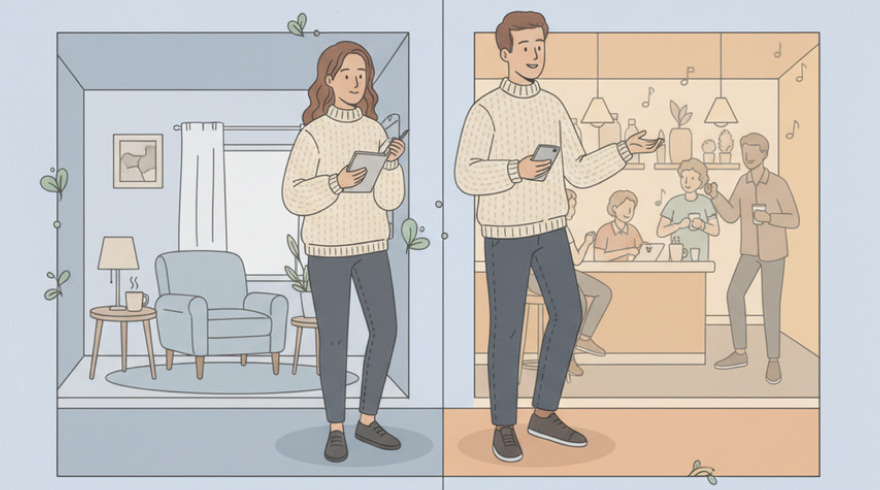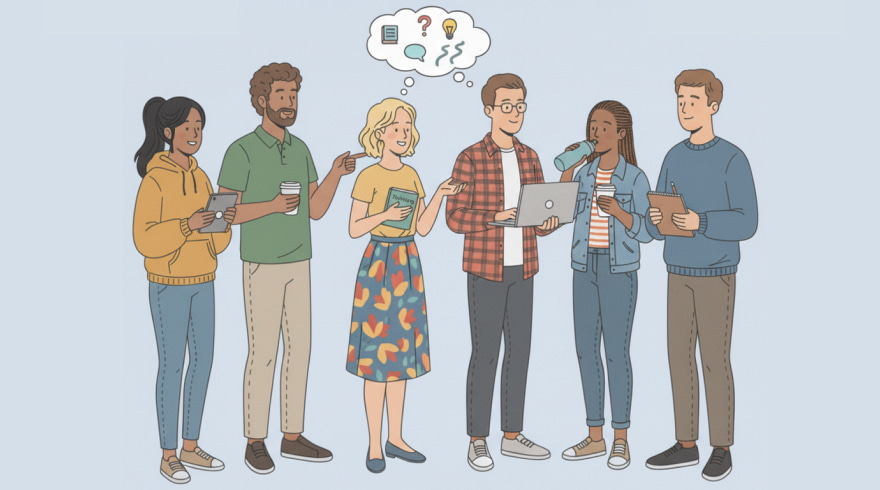Understanding the Four Introvert Archetypes: A Deep, Practical Guide
- 4 November 2025

Introversion Is More Than Shyness
Introversion describes how a person refuels, focuses, and protects attention in a noisy world. Rather than being a synonym for timidity, it reflects a preference for depth over breadth, deliberate pacing over impulsive socializing, and reflective processing over instant reactions. Researchers emphasize that this orientation exists on a spectrum, and that context, culture, and life stage influence how it shows up day to day. Many people identify with the broad idea and then discover specific patterns that make their inner life more understandable and sustainable.
Scholars and coaches often use a practical map to explain these patterns, and they do so because clear language helps with self-advocacy and goal setting. Educators frequently introduce the 4 types of introverts framework to illuminate how needs and strengths vary across different temperaments. With a shared vocabulary, partners can collaborate better, managers can structure work more thoughtfully, and individuals can design routines that match their cognitive rhythm. This approach reduces the guesswork and replaces vague labels with actionable insight and humane expectations.
- Energy management improves when you know what drains you and what restores you.
- Communication becomes easier with agreed-upon boundaries and predictable signals.
- Motivation grows when tasks align with natural focus cycles and preferred pacing.
- Wellbeing stabilizes through recovery rituals, quiet time, and meaningful solitude.
Meet the Four Core Introvert Types and How They Thrive
Across studies and coaching practice, four dependable patterns keep appearing, each with its own triggers, talents, and ideal environments. Rather than boxing anyone in, these categories serve as lenses that reveal leverage points for growth and collaboration. Many practitioners group recurring tendencies into the 4 types of introvert model for practical coaching and skills training. Knowing which tendencies fit you best can help you negotiate workload, advocate for focus time, and customize your daily routines.
| Introvert Type | Core Orientation | Common Stressors | High-Value Strengths |
|---|---|---|---|
| Social | Prefers intimate circles and selective gatherings | Large networks, constant meetups, forced mingling | Deep bonding, loyal partnerships, meaningful community building |
| Thinking | Rich inner life, imagination, and conceptual exploration | Superficial chatter, rushed decisions, interruptions | Insight, creativity, systems thinking, written clarity |
| Anxious | Vigilant, self-conscious in unfamiliar social terrain | Ambiguous norms, public scrutiny, high-noise settings | Preparation, risk scanning, careful execution |
| Restrained | Deliberate pacing, warms up slowly to action | Hurry culture, abrupt transitions, pressure to “perform” | Thoughtful timing, consistency, calm under pressure |
Social Introverts
Social introverts cherish connection but in concentrated doses. They thrive in small, trusted groups and often prefer long dinners, project pairs, or club-sized communities over broad mixers. Solitude is not withdrawal for them; it is refueling so that time with chosen people stays vivid and generous. They usually set boundaries around frequency and duration, which protects the quality of their relationships.
- Best environments: small teams, mentorships, curated communities.
- Communication edge: excellent listeners who track nuance and context.
- Growth move: schedule recovery buffers after social bursts to keep relationships strong.
Thinking Introverts
Thinking introverts live in a fertile inner world where ideas cross-pollinate constantly. They enjoy theoretical puzzles, long-form writing, and concept mapping, and they often produce elegant solutions once they have quiet to connect the dots. Rather than avoiding people, they simply prefer conversations that explore meaning or build something tangible together. Interruptions tend to fragment their flow, so they guard focus sessions and asynchronous channels.
- Best environments: maker days, research blocks, studio time.
- Communication edge: articulate in writing and in prepared dialogues.
- Growth move: translate insights into prototypes to secure early feedback.
Anxious Introverts
Anxious introverts feel heightened self-awareness in unfamiliar settings and prefer predictability. They are not defined by fear; they shine when expectations are clear and stakes are transparent. Their preparation ethic makes them reliable, and their sensitivity to social cues can protect teams from unforced errors. Calm, structured on-ramps help them bring their best judgment forward.
- Best environments: agendas, documented norms, step-by-step milestones.
- Communication edge: conscientious follow-through and thorough meeting prep.
- Growth move: rehearse micro-transitions to desensitize uncertainty gradually.
Restrained Introverts
Restrained introverts prefer to warm up before accelerating and dislike being rushed into decisions or visibility. Their natural pacing generates steady, compounding progress, especially on complex work that rewards patience. They are grounded in routines, and they anchor teams during stressful sprints by modeling calm execution. When others chase novelty, they preserve momentum and quality.
- Best environments: predictable cadence, intentional kickoff rituals, clear handoffs.
- Communication edge: measured input that reduces volatility and noise.
- Growth move: pre-negotiate decision windows so thinking time is respected.
The Benefits of Understanding Your Introvert Pattern
Clarity about temperament pays off quickly in career design, relationship agreements, and mental health maintenance. When you know your triggers and best channels, you can advocate for quiet time without guilt and propose structures that elevate results for everyone. Managers appreciate teammates who explain their operating system, and partners respond well to simple, repeatable rituals that preserve connection while protecting energy.
Self-awareness converts into practical moves like calendar architecture, communication norms, and thoughtful recovery. Once you can answer the what are the 4 types of introverts question for your own context, you can select tools, workflows, and environments that make your strengths obvious. Over time, this alignment lowers friction costs, prevents burnout, and cultivates sustainable momentum. You will likely notice that hobby choices, learning habits, and even vacation styles shift toward experiences that truly restore you rather than deplete you further.
- Optimize schedules: batch deep work, cluster meetings, and block recharge time.
- Negotiate norms: document response windows and preferred collaboration channels.
- Design recovery: micro-breaks, movement, and creative solitude throughout the week.
- Track signals: monitor focus quality, mood stability, and social appetite trends.
Introverts and Extroverts in Balance at Home and Work
Healthy teams celebrate complementary wiring and build processes that let each style contribute at full strength. Introverted contributors often elevate quality through deliberation and depth, while extroverted collaborators generate momentum, visibility, and rapid coordination. The best cultures combine these modes intentionally, rotating ownership based on the task at hand and the phase of a project’s lifecycle.
Comparative maps can help colleagues understand one another without reducing people to stereotypes, and they give leaders language for equitable planning. Many managers use overviews of the 4 types of extroverts to calibrate roles, meeting formats, and decision cadence. When both spectrums are respected, standups stay crisp, brainstorms yield artifacts, and handoffs protect focus. The result is fewer collisions, faster iteration, and better retention because contributors feel seen and set up to win.
- Pair strengths: depth research with stakeholder outreach for full-stack execution.
- Shape meetings: mix async briefs, focused discussions, and short live syncs.
- Phase projects: ideate widely, then narrow with structured analysis and testing.
- Codify norms: publish playbooks so expectations remain clear during change.
Find Your Fit and Build Habits That Work
Discovery begins with compassionate curiosity about how your attention moves through the day. Notice when your mind is vivid, when noise grates, and when you crave partnership versus solitude. Write down patterns for two weeks and you’ll see themes emerge around pacing, communication preferences, and optimal work conditions. Use those signals to make small, reversible experiments that refine your environment.
Tools can accelerate insight, as long as you treat them as conversation starters rather than verdicts. Many people like to begin with a reflective instrument such as a thoughtfully designed 4 types of introverts quiz to collect clues and language. After that, test-drive changes: adjust meeting density, schedule deep work windows, and curate social time that actually feeds you. As the feedback loop tightens, you will build a personal operating system that supports focus, connection, and recovery with less friction and more joy.
- Journal cues: track energy, attention, and mood across settings and tasks.
- Run experiments: change one variable at a time and review the outcome.
- Share playbooks: tell collaborators how to get your best work and why it helps.
- Iterate quarterly: revisit habits as seasons, roles, and goals evolve.
FAQ: Common Questions About the Four Introvert Archetypes
Are introverts always shy or socially anxious?
No. Shyness involves discomfort with social exposure, while introversion centers on how a person regains energy and prefers to process information. Many introverts are confident and socially skilled, especially in meaningful, well-structured settings. The key difference is preference for depth, pacing, and recovery time, not a universal fear of people.
Can someone be a blend of types?
Yes. Most people display a dominant pattern plus secondary traits from the other categories. Life stage, culture, and role demands can amplify one facet for a season. Treat the categories as descriptive tools, not rigid boxes, and adjust strategies as your context changes so your habits stay aligned with reality.
How can I support an introverted colleague on my team?
Offer clear agendas, asynchronous collaboration options, and protected focus blocks. Provide time to prepare for discussions and avoid last-minute requests when possible. Encourage written contributions alongside live conversations so thoughtful ideas can surface without constant interruptions or excessive meetings that drain attention.
What careers often suit introverted patterns?
Roles that reward depth, concentration, and craftsmanship tend to fit well: research, data analysis, writing, design, engineering, clinical work, and specialized consulting. That said, introverts succeed across all industries when they can shape their environment, manage bandwidth, and negotiate communication norms that respect focus time.
How do culture and technology affect introversion at work?
Always-on channels can erode attention if boundaries are vague, while well-structured tools empower focus and flexible collaboration. Cultures that normalize deep work, documentation, and intentional social time help introverted contributors flourish. Clear norms turn potential friction into synergy by aligning tools, timing, and expectations with human cognitive limits.
Finally, if you’re new to these ideas, take a week to observe your energy, experiment with small changes, and ask trusted people what conditions make your best work shine. The right insights compound quickly when you honor your natural rhythm and communicate it clearly.
As your understanding deepens, you’ll find that steady routines, tailored environments, and humane boundaries unlock creativity, reliability, and genuine connection without burnout.
With this clarity, you can craft a sustainable path that respects your temperament while amplifying your contributions at home, at work, and in your community.
When preferences are acknowledged, focus improves, relationships warm, and progress accelerates in ways that feel natural and repeatable for the long haul.
Most importantly, you gain language to advocate for your needs and to design a life that fits just right, day after day.
Latest News
-
![Extrovert Personality: A Deep Guide to Strengths, Skills, and Real-World Advantages]() Extrovert Personality: A Deep Guide to Strengths, Skills, and Real-World Advantages Take Introvert & Extrovert Personality Type Quiz Get Started The Social Engine Behind Outgoing Temperaments People who thrive in conversation, feel energized by teamwork, and seek lively environments often get tagged as “the talkative ones,” yet the reality...
Extrovert Personality: A Deep Guide to Strengths, Skills, and Real-World Advantages Take Introvert & Extrovert Personality Type Quiz Get Started The Social Engine Behind Outgoing Temperaments People who thrive in conversation, feel energized by teamwork, and seek lively environments often get tagged as “the talkative ones,” yet the reality... - 10 November, 2025
-
![Understanding the Quiet Power: A Deep Guide to Introvert Types and Their Benefits]() Understanding the Quiet Power: A Deep Guide to Introvert Types and Their Benefits Take Introvert & Extrovert Personality Type Quiz Get Started Introversion Today: a Quiet Advantage Modern life often rewards the loudest voice, yet the quieter style of processing, observing, and making meaning offers enduring advantages. Many people recharge by steppi...
Understanding the Quiet Power: A Deep Guide to Introvert Types and Their Benefits Take Introvert & Extrovert Personality Type Quiz Get Started Introversion Today: a Quiet Advantage Modern life often rewards the loudest voice, yet the quieter style of processing, observing, and making meaning offers enduring advantages. Many people recharge by steppi... - 7 November, 2025
-
![The Definitive Guide to Understanding and Using Introversion–Extroversion Assessments]() The Definitive Guide to Understanding and Using Introversion–Extroversion Assessments Take Introvert & Extrovert Personality Type Quiz Get Started What Introversion and Extroversion Really Mean Introversion and extroversion describe where your energy flows, how you recharge, and the social bandwidth that feels natural. Rather than a binary, most people...
The Definitive Guide to Understanding and Using Introversion–Extroversion Assessments Take Introvert & Extrovert Personality Type Quiz Get Started What Introversion and Extroversion Really Mean Introversion and extroversion describe where your energy flows, how you recharge, and the social bandwidth that feels natural. Rather than a binary, most people... - 6 November, 2025



